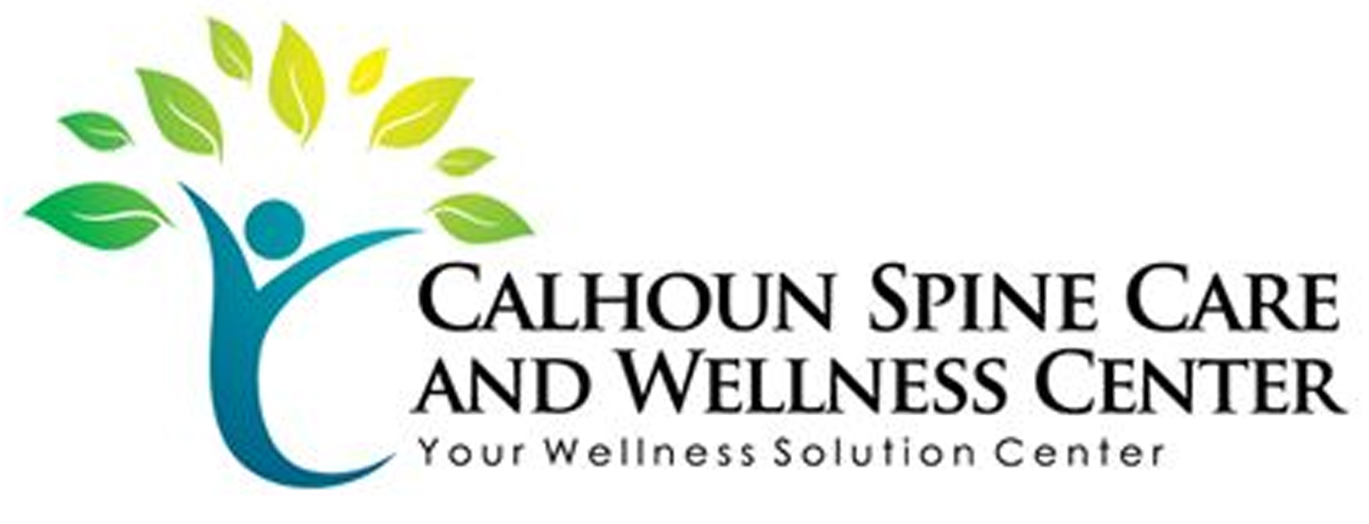If you've ever experienced a persistent headache, you might wonder how adjustments can provide relief right here in Calhoun. Chiropractic care focuses on restoring spinal alignment, which can ease muscle tension and improve overall nervous system function. By identifying your unique headache triggers, you can create a tailored adjustment plan that addresses the root causes, ultimately reducing both frequency and intensity. But what specific techniques can enhance your wellness routine and lead to lasting results? The answers may surprise you.
Understanding Headache Triggers
Identifying headache triggers can be key to managing your discomfort. Understanding what sets off your headaches allows you to take proactive steps to minimize their occurrence. You might notice that certain foods, drinks, or environmental factors often precede your headaches. Common triggers include caffeine, alcohol, aged cheeses, and processed meats. Keeping a food diary can help you track your intake and correlate it with headache episodes.
Stress is another significant trigger you should pay attention to. When you're under pressure, your body responds by tensing muscles, which can lead to tension headaches. Identifying your stressors and finding effective stress management techniques—like meditation, exercise, or deep breathing—can help you reduce the frequency of your headaches.
Additionally, you should consider your sleep patterns. Both too little sleep and poor-quality sleep can contribute to headaches. Establishing a consistent sleep routine can improve your overall rest and may help alleviate headache symptoms.
Environmental factors like bright lights, strong smells, and loud noises can also trigger headaches. If you find that you're sensitive to these stimuli, try to create a calming environment that minimizes exposure to them.
Finally, hormonal changes, particularly in women, can trigger headaches. Keeping track of your menstrual cycle may help you identify patterns related to hormonal fluctuations.
Benefits of Chiropractic Adjustments
Chiropractic adjustments offer you effective pain relief techniques that can reduce headache frequency and intensity.
By improving spinal alignment, these adjustments help your body function more efficiently.
Plus, enhancing nervous system function can lead to overall better health and well-being.
Pain Relief Techniques
Finding effective pain relief techniques can greatly improve your quality of life, especially when it comes to headaches. You don't have to suffer through pain; there are several strategies you can incorporate to alleviate discomfort.
Chiropractic adjustments are one of the most beneficial methods, but there are other techniques worth considering.
Here are three pain relief techniques that can help you:
- Regular Stretching: Incorporate gentle neck and shoulder stretches into your daily routine. This can relieve tension and prevent headaches from developing.
- Hydration: Staying properly hydrated is essential. Dehydration can trigger headaches, so aim to drink enough water throughout the day to keep your body functioning effectively.
- Mindfulness and Relaxation: Practicing mindfulness techniques, such as meditation or deep-breathing exercises, can reduce stress and tension, both of which are common headache triggers.
Improved Spinal Alignment
When headaches persist despite trying various pain relief techniques, improved spinal alignment through chiropractic adjustments can offer significant benefits. Realigning your spine can relieve tension in your neck and upper back, which are common sources of headache pain. By correcting misalignments, you help restore balance to your body, reducing stress on nerves and muscles.
Chiropractic adjustments can also enhance your posture. Poor posture often contributes to headaches, especially if you spend long hours at a desk or looking at screens. With improved alignment, you'll likely find it easier to maintain a healthy posture, which can further alleviate headache triggers.
Additionally, regular adjustments can lead to increased mobility in your spine and neck. This increased range of motion allows for better blood flow and oxygenation to your muscles, reducing the likelihood of tension headaches.
If you're dealing with chronic headaches, consider visiting a chiropractor. They'll assess your spinal alignment and create a tailored adjustment plan to address your specific needs.
With consistent care, you may experience fewer headaches and improved overall wellbeing. Embracing chiropractic adjustments can be a proactive step towards a pain-free life.
Enhanced Nervous System Function
Many people don't realize how closely the nervous system is linked to overall health and wellbeing. When you receive chiropractic adjustments, you're not just improving spinal alignment; you're also enhancing the functioning of your nervous system.
A well-functioning nervous system is essential for your body to communicate effectively and maintain balance.
Here are three key benefits of improved nervous system function through chiropractic adjustments:
- Reduced Pain Signals: Adjustments help alleviate pressure on nerves, which can reduce pain signals sent to your brain and decrease headache frequency.
- Improved Coordination: A well-aligned spine allows for better communication between your brain and body, leading to improved coordination and response times in daily activities.
- Enhanced Immune Response: A healthy nervous system supports optimal immune function, helping your body fight off illnesses that can contribute to headaches.
Physical Therapy Techniques
Physical therapy techniques play an essential role in alleviating headaches by addressing the underlying issues that contribute to pain. When you engage in targeted physical therapy, you're not just treating the symptoms; you're working on the root causes. For instance, manual therapy techniques, such as myofascial release or trigger point therapy, can help release tension in tight muscles that may be contributing to your headaches.
Your physical therapist will also likely incorporate stretching and strengthening exercises into your routine. These exercises focus on the neck, shoulders, and upper back, which are often sources of tension. By improving your posture and increasing flexibility, you can reduce the frequency and intensity of headaches.
Additionally, modalities like heat or cold therapy can provide immediate relief. Applying heat can help relax tight muscles, while cold therapy can numb painful areas and reduce inflammation. Your therapist may also introduce you to exercises that improve your overall body mechanics and ergonomics, which can be particularly beneficial if you spend long hours at a desk.
Don't overlook the importance of education in this process. Your therapist will guide you on proper body mechanics and techniques to avoid exacerbating your headaches. By actively participating in these physical therapy techniques, you're taking significant steps toward long-lasting relief.
Lifestyle Changes for Headache Relief
Making simple lifestyle changes can considerably reduce the frequency and intensity of your headaches.
By incorporating a few practical adjustments into your daily routine, you can create a more headache-friendly environment for yourself. Here are three effective changes to contemplate:
- Stay Hydrated: Dehydration is a common headache trigger. Aim for at least eight 8-ounce glasses of water daily. Keep a water bottle handy to remind yourself to drink throughout the day.
- Establish a Regular Sleep Schedule: Poor sleep can lead to increased headache episodes. Try to go to bed and wake up at the same time each day, even on weekends. Aim for 7-9 hours of quality sleep to help your body recharge.
- Manage Stress: Chronic stress can trigger headaches. Incorporate relaxation techniques like deep breathing, meditation, or yoga into your daily routine.
Even a short walk in nature can do wonders for your mental well-being.
Massage Therapy and Its Effects
Massage therapy offers a range of benefits that can greatly reduce headache pain.
By using specific techniques, you can target tension in the muscles and promote relaxation.
Let's explore how these methods can provide relief and improve your well-being.
Benefits of Massage Therapy
When you seek relief from headaches, you might find that massage therapy offers more than just a moment of relaxation. This hands-on approach can provide significant benefits, helping you manage headache symptoms and improve your overall well-being.
Here are three key benefits of massage therapy:
- Reduced Muscle Tension: Massage therapy targets tight muscles, alleviating tension that often contributes to headaches. By loosening these areas, you can experience less discomfort.
- Improved Circulation: Increased blood flow from massage helps deliver oxygen and nutrients to your muscles and tissues. This enhanced circulation can lead to reduced inflammation and pain, making headaches less frequent.
- Stress Relief: Massage therapy promotes relaxation, reducing stress levels that can trigger headaches. By calming your mind and body, you'll likely find that your headaches decrease in intensity and frequency.
Incorporating massage therapy into your routine could be a valuable tool for managing headaches.
It's not just about feeling good in the moment; it can lead to lasting relief and improved quality of life.
Consider giving it a try and see how it works for you.
Techniques for Headache Relief
Headaches can be a frustrating experience, but using targeted techniques for relief can make a significant difference. One effective method is massage therapy, which can ease tension and reduce headache frequency. When you schedule a massage, a trained therapist can focus on areas that often hold stress, such as the neck, shoulders, and scalp.
During your session, the therapist may use techniques like deep tissue massage or trigger point therapy, which target tight muscles and knots. This can enhance blood flow and release endorphins, your body's natural painkillers. You might notice immediate relief during the session, but the benefits can continue long after.
Incorporating regular massage therapy into your routine not only helps with acute headaches but can also prevent future episodes.
Additionally, you can practice self-massage techniques at home, like gently rubbing your temples or massaging the base of your skull. Using essential oils like lavender or peppermint during self-massage can further enhance the relaxing effects.
Nutrition's Role in Headache Management
Nutrition plays an essential role in managing headaches, and understanding what you eat can make a significant difference. Your diet can either trigger or alleviate headaches, so it's important to pay attention to the foods you consume. By making conscious choices, you can help reduce the frequency and intensity of your headaches.
Here are three key nutritional factors to take into account:
- Hydration: Dehydration is a common headache trigger. Make sure you're drinking enough water throughout the day. Aim for at least eight 8-ounce glasses of water, but adjust based on your activity level and environment.
- Trigger Foods: Certain foods may cause headaches in some individuals. Common culprits include aged cheeses, processed meats, and foods high in sugar. Keeping a food diary can help you identify any specific triggers unique to you.
- Balanced Diet: A well-rounded diet rich in fruits, vegetables, whole grains, and healthy fats can support overall health and potentially reduce headache occurrences. Foods rich in magnesium, like spinach and nuts, may be particularly beneficial as magnesium deficiency is linked to headaches.
Local Success Stories
Many individuals have found success in managing their headaches through a combination of lifestyle changes, including dietary improvements.
Take Sarah, for example. After years of struggling with chronic migraines, she decided to overhaul her diet. By eliminating processed foods and incorporating more whole fruits and vegetables, she noticed a significant decrease in the frequency and intensity of her headaches. She also began practicing mindfulness, which helped reduce stress—a known headache trigger.
Then there's Mike, who faced tension headaches from long hours at his desk. He started practicing regular stretching and took frequent breaks to stand and walk around. By adjusting his work environment and posture, he experienced fewer headaches. Mike found that these small changes made a big difference in his overall well-being.
Another success story is Lisa, who combined chiropractic adjustments with lifestyle changes. After just a few weeks of regular visits, she reported that her headaches became less frequent and less severe. The adjustments not only alleviated her pain but also improved her range of motion and sleep quality.
These local stories highlight how tailored lifestyle changes and proactive measures can lead to success in headache management.
Whether it's changing your diet, enhancing your work routine, or seeking professional help, you too can find strategies that work for you. Take inspiration from these individuals, and remember that your journey toward relief can be uniquely yours.
Finding the Right Practitioner
Choosing the right practitioner can make a significant difference in your headache management journey. You want someone who understands your specific needs and employs effective strategies to help alleviate your pain.
Here are three key factors to take into account when searching for the right practitioner:
- Qualifications and Experience: Look for practitioners who specialize in headache treatments, such as chiropractors, physical therapists, or neurologists. Check their credentials and ask about their experience with patients who've similar headaches to yours. This guarantees you're in capable hands.
- Treatment Approach: Different practitioners use various techniques. Some may focus on spinal adjustments, while others may incorporate massage, acupuncture, or lifestyle changes. It's crucial to find someone whose approach aligns with your preferences and comfort level. Don't hesitate to ask about their methods during your initial consultation.
- Patient Reviews and Recommendations: Word of mouth can be invaluable. Seek recommendations from friends or family and read online reviews to gauge other patients' experiences. A practitioner with positive feedback and a good reputation is likely to provide you with the care you need.
Conclusion
Incorporating chiropractic adjustments into your routine can make a real difference in managing headaches. By understanding your triggers and working with a practitioner to develop a tailored plan, you can reduce headache frequency and intensity. Don't forget to contemplate other therapies like physical therapy, massage, and nutrition that can enhance your overall well-being. Take charge of your health in Calhoun, and enjoy a more vibrant, headache-free life. You deserve to feel your best every day!



